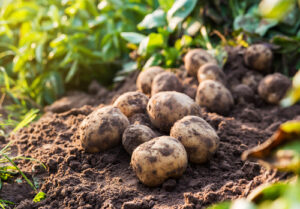The Escalating Food Crisis: A Deep Dive into Ukraine and Russia

The world’s breadbasket is experiencing a shocking rise in food prices. In Ukraine, grocery prices skyrocketed by 22.1% in May compared to last year, while the overall Consumer Price Index (CPI) increased by 15.9% annually. As essential staples like fruits have surged by 17.6%, the challenges to food security become starkly apparent.
Imports and Exports: Navigating Crisis
Both Ukraine and Russia are increasingly dependent on food imports to cope with rising prices. Despite exporting about 10.6% of its food supply last year, Ukraine has turned to the EU, which accounted for 51.3% of its food imports. In 2022, the EU’s food export revenue to Ukraine reached approximately $5 billion, predominantly stemming from top suppliers like Poland, Germany, and France.
On the other side, Russia is also grappling with high food inflation, which reached 12.66% as of April, with overall inflation at 10.2%. Key staples like potatoes have seen prices triple within a year, demonstrating how urgent this food crisis has become. Elvira Nabiullina, the Central Bank Governor, emphasizes that in times of economic distress, people prioritize spending on essentials like food, which leads to higher inflationary expectations.
The Rising Cost of Living
For the average Russian household, food expenses skyrocketed to 35% of their income in April—a five-year high, according to the Romir think tank. Countries like Egypt have stepped in to fill the gap, boosting exports of staple foods dramatically. Egypt supplied 274,000 tonnes of potatoes to Russia this May alone, a 4.5-time increase from last year. Moreover, they’ve become significant suppliers of onions, nuts, fruits, and vegetables.
China is also addressing shortages by sending 65,000 tonnes of potatoes to Russia over the first half of the year. Other nations, including Georgia, Pakistan, Kazakhstan, and Armenia, are ramping up contributions to Russia’s food supply. This dynamic showcases how nations are navigating this crisis to support one another, often at the expense of those embroiled in conflict.
The Broader Implications
Agriculture Minister Dmitry Patrushev believes that food prices will start stabilizing by July. However, the broader implications of rising food prices could threaten socio-political stability. Historical patterns reveal that surges in food costs often precipitate unrest, with the French Revolution and the Arab Spring commonly cited as examples driven by hunger rather than political ideology.
In the current landscape, both Russians and Ukrainians are feeling the brunt of rising prices, leading to an erosion of confidence in governmental frameworks. This pervasive dissatisfaction can spiral into unrest, exemplifying how critical it is to understand the relationship between food security and population stability.
A Call to Action
At Extreme Investor Network, we advocate for proactive measures in response to these troubling trends. Food prices are not merely a statistical blip; they resonate deeply with the everyday lives of individuals and families. Understanding the dynamics of food inflation can empower investors and consumers alike to make informed decisions.
Stockpiling Essentials:
As we’ve noted since pre-COVID-19 discussions, it’s wise to consider stockpiling essential food items. Supply chain disruptions and inflation have left Americans—and people worldwide—vulnerable to sudden price shifts that can affect everyday living.
Final Thoughts
As food prices continue to climb and geopolitical tensions reveal their complexities, staying informed and proactive is more essential than ever. The interplay of economics, agriculture, and social stability is intricate, but with awareness and action, we can navigate these waters more effectively. Join us at Extreme Investor Network for ongoing insights and strategies to stay resilient in these uncertain times.

